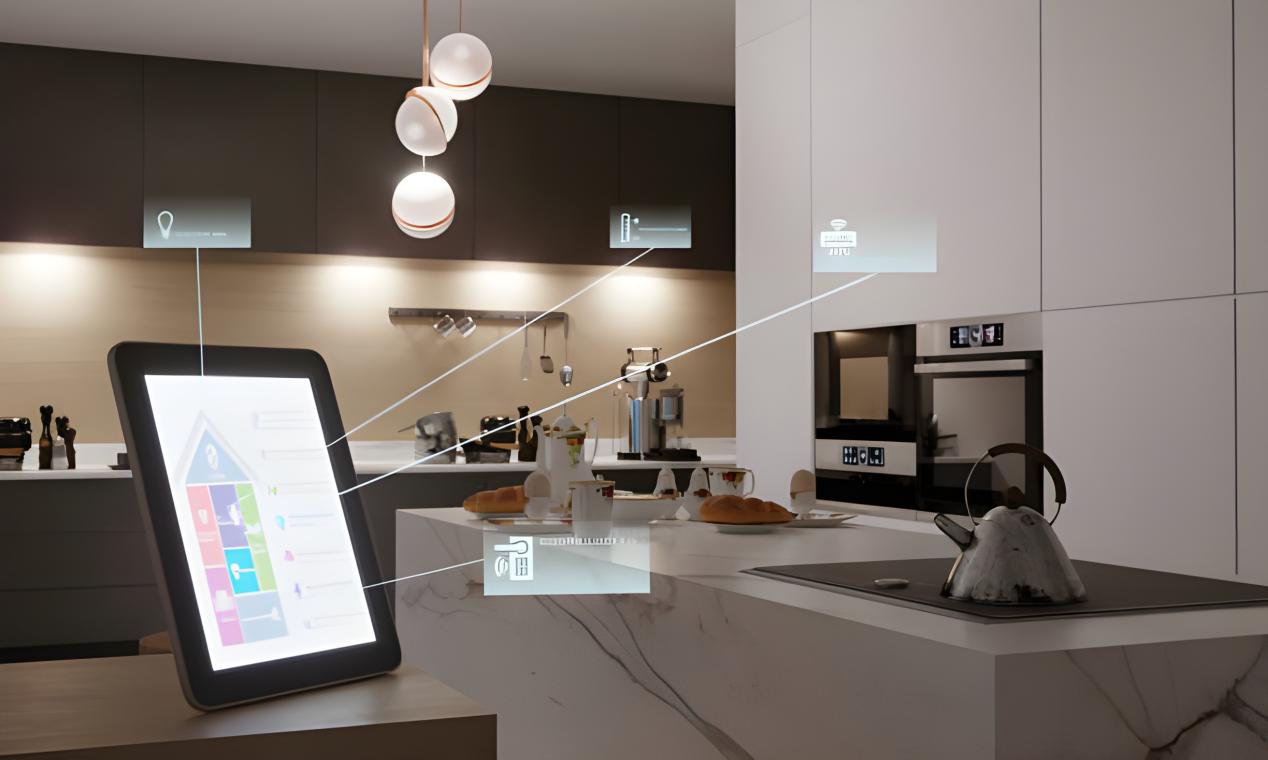Home Automation Apps

At Wired Smart Solutions, we are deeply attuned to the dynamic advancements in security technology. This article explores cutting-edge developments in smart security systems, showcasing how these innovations are transforming safety measures for both homes and businesses. Dive into our exploration of this refined technology that’s crafted to safeguard your most cherished assets.
Table of Contents
ToggleKey Takeaways
- Versatility: Home automation apps integrate various devices from different manufacturers.
- Convenience: Control your home remotely, making life easier and more comfortable.
- Energy Efficiency: Automated routines help in saving energy by optimizing device use.
- Security: Enhanced home security through real-time alerts and automated systems.
- Customization: Tailor your home environment to your needs and preferences.
What Are Home Automation Apps?
Home automation apps are software applications designed to control and monitor smart devices in the home from a mobile device, tablet, or desktop. These apps allow users to manage everything from lighting and climate to entertainment and security systems. Whether you’re adjusting the thermostat, turning off the lights, or checking your security cameras while you’re away, home automation apps provide a central hub for all of these functions.
Most home automation apps connect with a range of devices through Wi-Fi, Bluetooth, Zigbee, or Z-Wave, and some even work across multiple platforms to allow users to manage all their devices with a single interface. With the help of these apps, IOT based smart homes systems have become more intuitive, efficient, and personalized.
In the context of home automation, ensuring security is paramount. Incorporating a standard information security policy is essential to safeguard user data and protect against unauthorized access. Such a policy outlines best practices for encryption, user authentication, and secure communication between devices. By adhering to these guidelines, home automation apps can provide not only convenience but also a secure and trustworthy environment for managing smart home systems.
Overview of Popular Home Automation Apps
1. Google Home
Google Home is one of the most widely used home automation apps. It provides a unified platform to control all Google-compatible smart devices, such as Nest thermostats, Google Nest cameras, smart lights, and speakers. The app is available on both Android and iOS, offering an intuitive interface for managing various smart devices.
Google Home works seamlessly with Google Assistant, enabling voice commands to control devices. The Google Home app can also integrate with third-party smart devices, making it versatile and compatible with many brands. It’s an excellent choice for users already invested in the Google ecosystem.
2. Amazon Alexa
Amazon Alexa is another leading player in the home automation space. Similar to Google Home, Alexa serves as a hub for controlling Amazon-compatible smart devices like Echo speakers, Ring doorbells, and smart plugs. Additionally, Alexa supports a vast range of third-party devices, making it an incredibly versatile app for managing your home automation system.
One of Alexa’s most valuable features is the ability to create “Routines” or automated sequences of actions. For example, you can create a routine to turn off all lights, lock the doors, and set the thermostat when you say, “Alexa, I’m leaving.” Alexa also supports voice commands, allowing users to control devices hands-free with commands like, “Alexa, turn on the kitchen lights,” or “Alexa, set the bedroom temperature to 68 degrees.”
Alexa also integrates well with other smart ecosystems, including smart locks, thermostats, and security systems. The Alexa app is available on both Android and iOS, ensuring accessibility for users regardless of their device choice.
3. Apple Home (HomeKit)
Apple’s HomeKit is designed to provide a seamless home automation experience for users of Apple products. The Home app on iOS and iPadOS is the primary interface for controlling all HomeKit-enabled devices, such as smart lights, thermostats, cameras, and even locks. HomeKit is known for its high level of security, as it uses end-to-end encryption to ensure that only authorized users can control the devices.
One of the key features of HomeKit is its integration with Siri, Apple’s voice assistant. Users can control their smart devices using voice commands like, “Hey Siri, turn on the lights,” or “Hey Siri, set the temperature to 70 degrees.” Furthermore, HomeKit supports automation, allowing users to create scenarios where devices perform actions automatically based on triggers such as time of day or location.
HomeKit’s ecosystem is known for its interoperability with a wide range of third-party smart devices, providing flexibility to users who want a high degree of customization in their smart home setup.
4. SmartThings
SmartThings, developed by Samsung, is one of the most comprehensive home automation apps on the market. It supports a wide array of smart devices from various manufacturers, making it ideal for users who want to integrate products from different brands into one unified system.
The SmartThings app allows users to control devices like lights, cameras, sensors, door locks, and even appliances, all from a single interface. It offers advanced automation capabilities, including the ability to create custom routines and set triggers based on factors such as motion, time of day, or environmental conditions. For example, you can set your home to enter “Away Mode” when no motion is detected for a certain period or program your lights to turn on at sunset.
5. Ring
While Ring is primarily known for its video doorbells, it has expanded its portfolio to include various security products such as cameras, smart lighting, and alarms. The Ring app is an essential tool for controlling these devices, allowing users to monitor their property, view live video feeds, and receive alerts about suspicious activity.
Ring’s home automation features focus largely on security and safety, with integration options for smart locks, lights, and alarms. For example, users can set up motion-activated lights or program their alarm system to arm when they leave the house. The Ring app can also be integrated with Alexa, allowing users to control their devices using voice commands.
6. IFTTT (If This Then That)
To fully harness the power of home automation, it’s essential to select apps and services that seamlessly integrate with all your smart devices. Compatibility, user-friendly interfaces, and robust security features are key considerations when choosing the right app for your home. Additionally, the availability of reliable customer support and regular software updates can enhance the overall performance of your smart ecosystem, ensuring your devices stay secure and functional over time. By choosing the right smart solution services, you can optimize your home’s automation and elevate convenience and security to the next level.
Integrating Smart Technology
To fully harness the power of home automation, it’s essential to select apps that seamlessly integrate with all your smart devices. Compatibility, user-friendly interfaces, and robust security features are key considerations when choosing the right app for your home.
Conclusion
Home automation apps are essential for creating a smart home that is not only functional but also efficient and secure. Whether you’re using Google Home, Amazon Alexa, Apple HomeKit, SmartThings, Ring, or IFTTT, each app offers unique features and advantages for controlling your smart devices. At Wired Smart Solution, we are dedicated to turning your home into a smart hub tailored to your unique needs. For more information on integrating smart technology into your home or to get started with a personalized system, contact us today. Let’s make your home smarter, together.
FAQs:
They control a range of devices including lighting, thermostats, cameras, locks, and appliances from a smartphone or voice assistant.
By setting automated routines for thermostats and lights, these apps reduce energy waste and enhance savings.
Yes, they use advanced security protocols like end-to-end encryption to protect device control.
Yes, apps like IFTTT allow the integration of multiple apps for broader device control.
They enhance convenience, energy efficiency, and security, and allow customization of home environments.
Consider device compatibility, ease of use, features, and integration with other smart ecosystems.
Useful Links
Sitemap
Subscribe
Stay always in touch! Subscribe to our newsletter.

